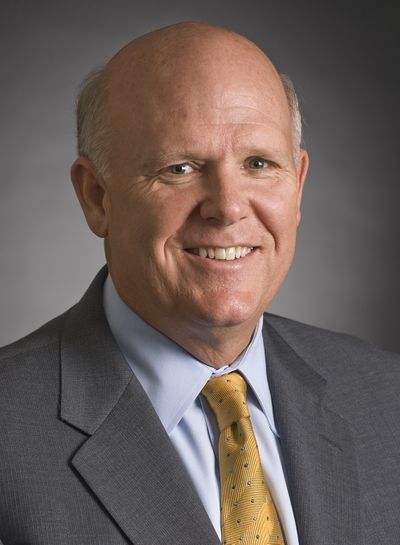GM chief leaving, stock sale coming
Company posts profit second quarter in a row

DETROIT – In a signal moment for the turnaround of the American auto industry, General Motors is edging toward a public stock sale, and its profits are now solid enough that the demanding CEO will step aside, saying his work is done.
GM said Thursday that it made $1.3 billion from April through June, its second straight quarter in the black and a complete reversal from last year, when it was forced into bankruptcy and the U.S. government took a majority stake.
CEO Ed Whitacre said he would leave his post Sept. 1. He said the GM board knew all along that he would do so after the company returned to health, and industry analysts said it was an important step leading up to the stock sale.
Whitacre, who will stay on as chairman through the end of this year, will be replaced as CEO by Daniel Akerson, a 61-year-old former telecommunications executive who sits on the GM board.
While executives would not discuss the stock sale Thursday, GM is expected to file its initial paperwork with federal regulators as early as today.
“Things look good. There’s a foundation in place, a good foundation,” said Whitacre, who was drafted out of his first retirement by the government to fix the troubled GM. “I believe we’ve accomplished what we set out to do.”
Last year, GM lost nearly $13 billion in the second quarter alone. In the first six months of this year, GM made $2.2 billion as cost cuts took full effect, sales in China grew and people paid more for GM’s revamped vehicles in the U.S.
For example, GM’s crossovers, which are similar to SUVs but built on car undercarriages, are fetching $3,000 more this year than last. Crossovers such as the Chevrolet Equinox and Buick Enclave have sold well, and the company has high hopes later this year for the Chevy Cruze, its first decent compact, and the Volt, a $41,000 rechargeable electric car.
The federal government got a 61 percent stake in GM in exchange for $43 billion in aid to keep it alive. It could sell some or all of that when GM makes its public stock offering, perhaps as early as November.
GM must first reveal to the Securities and Exchange Commission how many shares it intends to sell on the open market and at what price. The government would then tell GM how much of its stake it will sell, and GM would disclose that in another filing.
If GM’s shares sell for too little, the government and other stakeholders are less likely to get their money back and GM is less likely to raise money to pay off debt.
The environment for new stock offerings is less than welcoming. Six initial public offerings have been postponed since June 1, in part out of fear that they wouldn’t fetch a high enough share price, said Matt Therian, an analyst with Renaissance Capital, a Greenwich, Conn., firm specializing in public stock offering research.
GM, however, may have enough cache to overcome the sluggish economy, Therian said.
“The IPO market can be a case-by-case basis,” he said. “I think in many ways GM is going to be a unique story.”
Scott Sweet, owner of IPO research firm IPO Boutique, said the Obama administration may be pressuring GM to sell prematurely to influence the November congressional elections and make the government’s controversial investment look smart. Whitacre and the government have both said GM is in charge of the timing of the new stock offering.
Akerson will be GM’s fourth CEO in 18 months. Like Whitacre, a former CEO of AT&T, Akerson worked in top executive positions at major telecommunications companies. He held top posts at MCI and Nextel.
Both have been described as hard-charging executives who demand results. Whitacre, 68, who was known within GM for his disdain for PowerPoint presentations and his surprise visits to factories, said Akerson shares his vision for the company.
GM still faces problems. Its U.S. sales rose 14 percent in the first six months of this year, lagging behind the average industry increase of 17 percent. It spends more on car buyer incentives than any other automaker, according to Edmunds.com.
GM has also relied heavily on sales to rental car companies, governments and corporations, which are less lucrative than sales to individual customers.